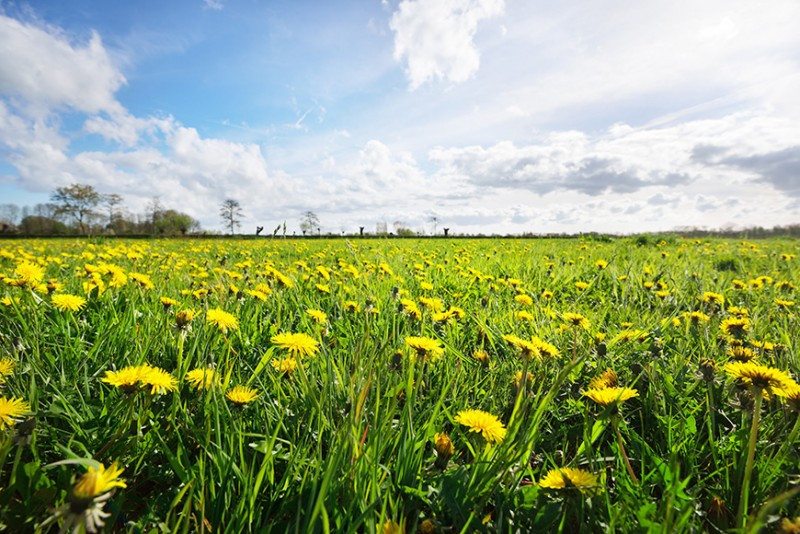Look closely enough and chances are you will see plants growing outside or near your home that have the sort of health benefits typically available at the local pharmacy or in the vitamins section of your local grocery store. Many plants are medicinal in nature, and many of those are growing right under your nose, maybe even in your backyard or in some wooded area a couple of blocks away. Most of us in the 21st century have been conditioned to think that any substance or compound medicinal in nature is out of our immediate reach, that it can only be acquired over the counter at a store or with the help of a doctor's prescription. While that might be true in our highly regulated world, and that isn't necessarily a complaint, some plants common to our everyday existence provide healthful benefits. All we need to know is what they are and how to recognize them, what they can do, and what precautionary measures need to be taken to ensure that they are safe for consumption (start by consulting with a physician).
We Already Know about Many of These Plants
Some of these common plants include dandelions, thyme, peppermint, chamomile, lavender, ginger, and echinacea. Surprised? You shouldn't be. This is not new science; nothing revelatory here. In fact, ample use of plants for treating the sick or injured has been around for centuries, and much of it has been quite effective. According to the World Health Organization (WHO), about 80 percent of the world's population uses traditional remedies, such as plants as primary health-care compounds, while 70 percent of the new drugs launched in America are produced from natural products, mostly plants, per articles.mercola.com. Ancient civilizations were well versed in using plants for treating ailments ranging from common to life-threatening. Even into the early 20th century, it was traditional for the medicinal use of herbs to be passed from one generation to the next. So, if the use of common plants to render aid to the sick seems like a novel idea to you, know that such practices were first being used by our ancestors long ago.8 Common Plants and Their Health Benefits
There are dozens of plants and plant-based compounds that are effective in preventing or treating various health issues, but here are eight of the more common plants with uncommon health benefits. A word of caution: even if you have any of these plants growing in your backyard, or in your neighbor's yard across the fence, don't play doctor and start using them yourself without proper guidance from a health care professional:- Chamomile. This beautiful flower, which makes a popular tea, can provide a wide range of health benefits, such as aiding in skin health, preventing bacterial infections, helping with the digestive system, and promoting muscle relaxation, per themysteriousworld.com.
- Dandelion. Maybe we should just call it the super plant. This lovely flower is a great ornamental plant, often seen in gardens and parks, but it also is real dandy when it comes to health. Among its attributes, per organicfacts.net: enhancing bone health (thanks to its abundance of calcium); maintaining liver health (chalk that up to its provision of vitamin C and luteolin); treating urinary disorders; skin care; alleviating constipation; and acne prevention. There's plenty more, but you get the picture.
- Echinacea. The secret has been out on this plant for a long time, that being its purported value in helping our bodies stave off colds and flu. It's an herb that goes to work as active chemicals in our bodies – once consumed, of course.
- Ginger. Where do we start when proclaiming ginger's value in terms of our heath? Let's start with upset stomachs. Ginger's best-known health asset is its ability to calm nausea and settle stomachs before things get, shall we say, out of hand. It is an antibacterial, an antiviral, and an antioxidant, and it has anti-parasitic qualities, per articles.mercola.com. Got indigestion? If you keep ginger handy in your cupboard, you should be OK. Be prepared.
- Lavender. This purplish flower goes more than skin deep in making our skin glow – its extracted oils have antibacterial and antiviral characteristics, benefitting us in confronting unwanted conditions such as anxiety, stress, and insomnia, per themysteriousworld.com.
- Marigold. This beauty of a flowering plant, popular in gardens, grows in a variety of soils, putting it within easy range of home owners across America. And that's a good thing, because this plant has shown to be effective in eliminating skin problems, reducing body scars, and as a headache and toothache reliever. Reports also say that it can help deal with allergies thanks to its anti-inflammatory powers.
- Peppermint. This hybrid plant, harvested mostly in Europe, is widely used in oil form as a food flavoring. In terms of medicinal properties, peppermint can provide a calming effect and other health benefits, thanks to its antibacterial and antifungal properties. It has also been identified as a possible remedy for sinus infections and body pain, and even has been tagged as a compound that can boost memory power and alertness.
- Thyme. OK, so this herb was used in ancient Egypt as an embalming agent, but it was also most useful in treating many medical conditions, thanks to its antifungal, antiviral, antiseptic, and antiparasitic properties. Its health benefits have been reported to include treating hypertension, providing quick relief from cough and cold, and in calming the nervous system. In other words, relax; this stuff works.

